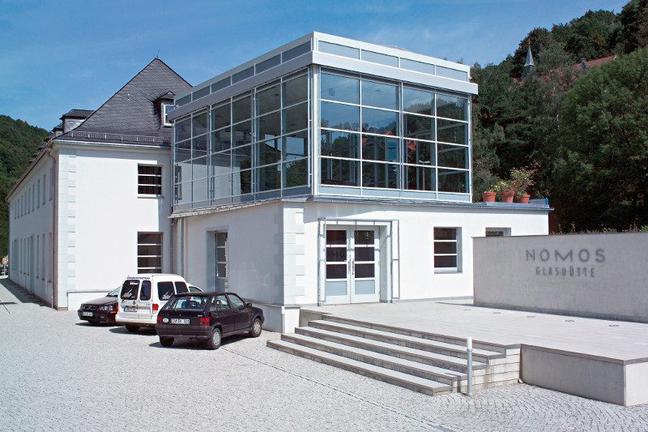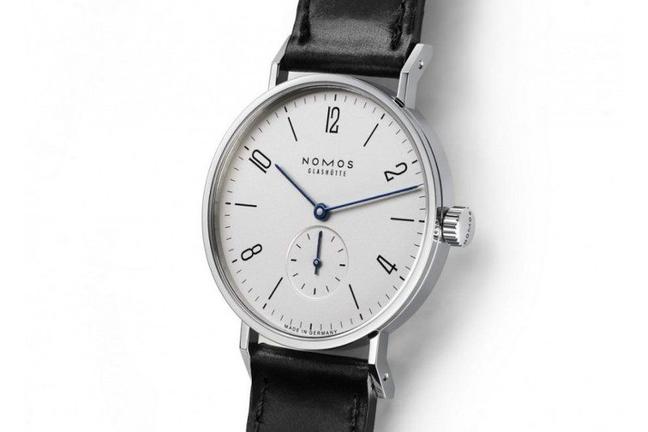In-house movements, reliability, good looks, and affordable price tags – Simon de Burton is intrigued by German watchmakers Nomos Glashütte
Mention high-end watchmaking and most people think of Switzerland – but there’s a little corner of Germany that’s every bit as proud of its clockwork heritage. It’s the old Saxon town of Glashütte, which once did very nicely out of extracting iron ore from the surrounding Erzgebirge mountains. Until the early 1800s, that is, when the ore ran out.
A period in the economic doldrums followed, before a man called Ferdinand Adolph Lange established the town’s first watch factory in 1845. It drew several master makers to Glashütte, which soon became established as a centre of horological prowess to rival the Swiss Jura.
But World War II left the region badly battered by relentless British bombing raids and many watch factories were razed to the ground. Some bounced back, yet no sooner had a degree of normality resumed had the former East German state expropriated the main businesses and created the VEB Glashütter Uhrenbetrieb factory, a conglomerate formed in 1951.
GUB, as it was sometimes inelegantly known, ploughed-on throughout the Cold War period, making workmanlike and reliable mechanical watches for the masses which, while they were nothing special, at least enabled Glashütte’s vital horological skills to be maintained. But the 1991 collapse of the USSR, which had previously cocooned the town from the vagaries of the wider economy, suddenly left it in jeopardy because all but 72 of the 2,500 people employed by GUB lost their jobs.
And why am I telling you all this? Because out of that somewhat dark story emerged something fresh, new and exciting in the form of a watch company called Nomos. It was founded just two months after the fall of the Berlin Wall in 1990 by a visionary entrepreneur called Roland Schwertner, who saw that the re-unification of Germany provided a golden opportunity for a new order of horological creativity.

From the very outset the Nomos aesthetic adhered to the Bauhaus ethos of form and function – meaning its designs were simple, clean, crisp and unadorned. Prices were kept decidedly affordable, complications were not an option, and tried and trusted ETA movements were initially used to ensure the reliability and longevity which would enable the brand to build a reputation.
It proved to be a successful formula – so successful, in fact, that the popularity of the first collection of four, hand-wound models launched in 1992 enabled the small firm employing a few dozen people to seriously consider establishing itself not just as an assembler of watches using other people’s components, but as a true ‘manufacture’ making the majority of its own parts in-house.
By 2005 Nomos had achieved its heady ambition, and since then every watch that leaves the bench contains a genuine manufacture movement with 95 per cent of parts being made in-house.

What is more remarkable, however, is that the most expensive steel watch in the entire range of a dozen families still costs only £3,800 (and that’s for a World Timer), with the entry-level, hand-wound Club being priced at just £1,000. Yes, that’s £1,000 for a mechanical watch with an in-house movement.
If you insist on splashing out, however, Nomos will sell you one of its gold Lambda or Lux models introduced a couple of years ago for as much as £12,800.
But it’s really the unassuming simplicity of the brand that makes it so appealing – especially since it belies the firm’s remarkable commitment to engineering, demonstrated the launch of successive in-house movements and newer versions of the popular Tangente model and Minimatik woman’s watch.

Called the DUW 3001, it’s an automatic caliber, which, at just 3.2mm thick, falls comfortably into the ‘ultra flat’ category – yet it has been designed for series production and, in keeping with Nomos tradition, will remain affordable. Using the brand’s ‘swing system’ self-winding mechanism, the movement dispenses with a balance cock in favour of a bridge to hold the balance stable and facilitate the rotor’s bi-directional action.
According to Theodor Prenzel, deputy head of research and development at the firm’s Berlin design HQ, the DUW 3001 took three years and €2.5 million to create – yet that hasn’t stopped Nomos from offering it in its new Neomatik range with a starting price of a mere £2,120.
But don’t tell the Swiss because they probably won’t believe you.
In fact, Nomos, how do you actually do it?
(This article originally appeared in our Winter 2015 issue)

Become a Gentleman’s Journal Member?
Like the Gentleman’s Journal? Why not join the Clubhouse, a special kind of private club where members receive offers and experiences from hand-picked, premium brands. You will also receive invites to exclusive events, the quarterly print magazine delivered directly to your door and your own membership card.


